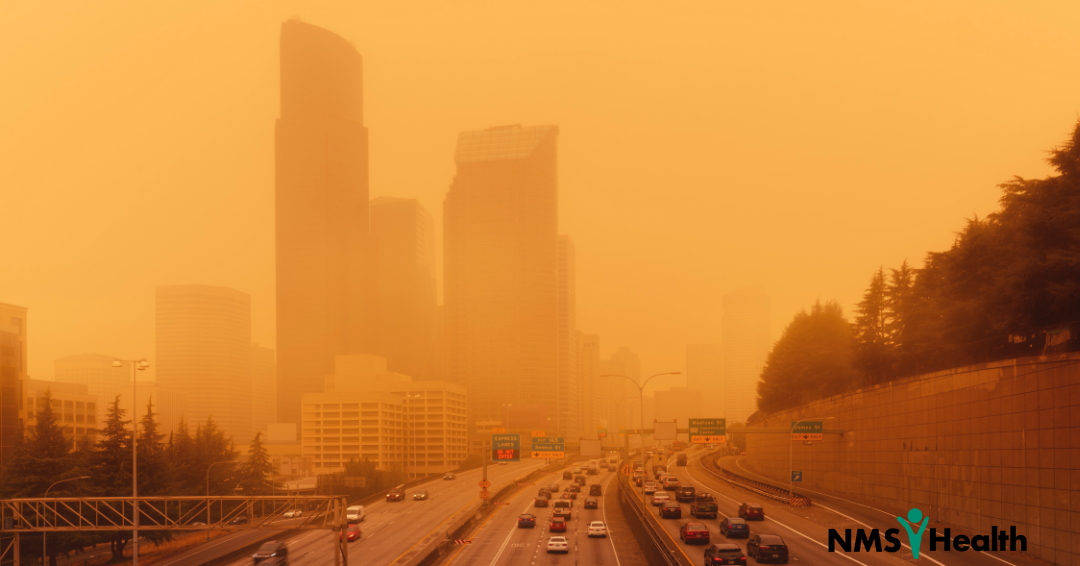Wildfires are a common occurrence in forested and grassland regions of Canada and the United States from May to October. However, this year there has been an unprecedented amount of activity in the start of the Canadian wildfire season. As of June 14th, 2,619 fires have burned 13,074,991 acres (5,291,261 hectares). The peak of Canadian season is typically observed in July, while on the west coast of the United States September and October are the most vulnerable months for wildfires. With several months still ahead, employers need to remain vigilant in safeguarding their workforce and managing potential wildfire smoke risks.
In Canada, remote and sparsely populated areas are typically affected by wildfires in Spring and Summer. But this year’s fires spread out more widely, including places in Quebec which usually remain unaffected. Unfortunately, the wildfires are so robust thus far that they have covered an area already larger than what had been burned all last year. The disruption brought smokey consequences to the eastern seaboard of Canada and the United States this month, serving as a powerful reminder of the negative consequences of climate change.
Understanding Wildfire Smoke Risks
The Occupational Safety and Health Administration (OSHA) highlights the significant health hazards that outdoor workers face due to wildfire smoke exposure. The primary concern is particulate matter, tiny particles of partially burned material measuring less than 2.5 micrometers in diameter. These particles can enter the lungs and bloodstream, potentially leading to various health issues.
“Wildfire smoke exposure can create major health hazards for outdoor workers. These hazards can be reduced with knowledge, safe work practices and appropriate personal protective equipment,” said Assistant Secretary for Occupational Safety and Health Doug Parker, in a statement. “I urge all employers to have plans and preparations in place to protect workers by preventing or minimizing exposure to hazardous air quality.”
Workers exposed to smoke-polluted air may experience coughing, wheezing, headaches, and eye and respiratory tract irritation. Prolonged exposure, lasting five to seven days, can lead to damage of the lungs, circulatory system, and heart, increasing the risk of strokes, due to hazardous substances, such as heavy metals, in the atmosphere. Employers should prepare for and plan to implement procedures to reduce exposure to smoke when necessary.
Protective Measures
To minimize the risks associated with wildfire smoke, OSHA (Occupational Safety and Health Administration) and the National Institute for Occupational Safety and Health recommend the following protective measures for at-risk workers:
Monitoring Air Quality: Stay informed about air quality conditions by using reliable sources like the Environmental Protection Agency’s AirNow. Regularly monitor updates to make informed decisions regarding worker safety.
Relocating and Rescheduling: Whenever possible, consider relocating or rescheduling work tasks to smoke-free areas. This reduces workers’ exposure to harmful air pollutants and protects their respiratory health.
Adjusting Physical Activity: Reduce levels of physical exertion, especially strenuous and heavy work, to prevent exacerbation of health risks.
Promoting Breaks in Safe Areas: Encourage and require workers to take breaks in smoke-free locations when possible. This provides them with an opportunity to breathe clean air and reduce their exposure to hazardous smoke.
Indoor Accommodations: When feasible, make accommodations for employees to work indoors with proper HVAC systems and high-efficiency air filters. This helps improve indoor air quality and minimizes exposure to harmful pollutants.
Safeguarding Your Employees
Remember, protecting your workforce from the health hazards of wildfire smoke is not only essential for their well-being but also crucial for maintaining productivity and employee morale. At NMS Health, we understand the significance of protecting your employees’ health and well-being, especially during challenging situations like wildfires. By implementing appropriate measures and prioritizing their respiratory safety, you demonstrate your commitment to protecting employees from wildfire smoke smoke risks and maintaining a safe work environment.
OSHA has additional resources available for employers at osha.gov/wildfires and NIOSH has a page on wildfire smoke exposure.
Click here to learn more about how NMS Health can support you in safeguarding your employees’ health. Together, we can ensure that your workforce breathes easy, even in the face of environmental adversities.


